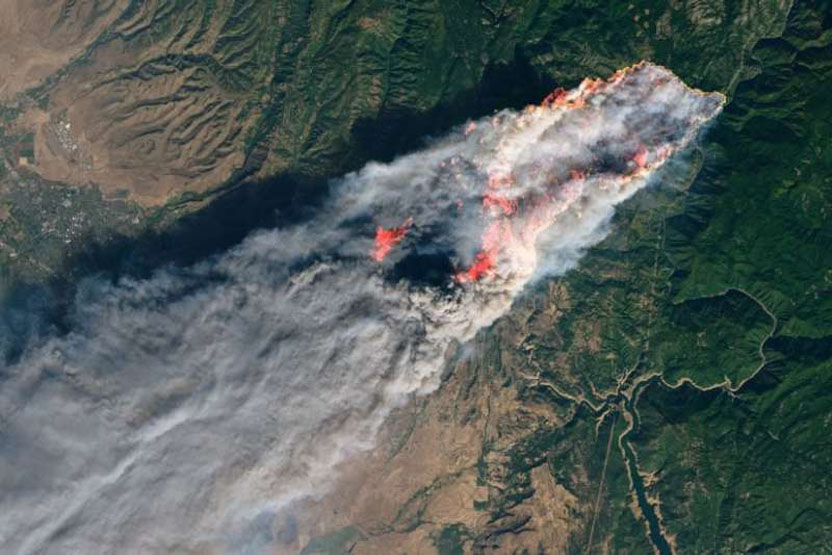
As wildfires grow in size and intensity across the world, scientists warn that the dangers extend beyond the choking smoke and ash visible in the skies.
New research led by the University of Utah shows that wildfire smoke also triggers sharp increases in ground-level ozone — a near-invisible pollutant that can seriously harm human health.
The study, published two weeks ago in the journal Atmospheric Environment, found that smoke from the record-breaking 2020 wildfire season boosted ozone levels by an average of 21 parts per billion (ppb). In many cases, this pushed concentrations above the U.S. Environmental Protection Agency’s health threshold of 70 ppb.
“Ozone was roughly 20 to 30 percent higher because of wildfire smoke. That’s pretty big,” said Derek Mallia, lead author and assistant research professor of atmospheric sciences at the University of Utah.
Unlike particulate matter, which is directly released into the air, ozone forms through complex photochemical reactions involving sunlight, nitrogen oxides (NOx), and volatile organic compounds (VOCs). While NOx often comes from human activities such as traffic and industry, VOCs are abundant in wildfire smoke — making blazes a powerful driver of ozone formation even in remote regions far from urban pollution sources.
The research team used advanced computer models (WRF-Sfire and WRF-Chem) to simulate conditions during August 2020, one of the most destructive fire periods in modern history. California’s August Complex fire alone scorched over one million acres and caused $12 billion in damage. Across the West, dozens of major fires contributed to massive smoke plumes that spread across state lines.
The findings complicate the already dire picture of wildfire-related pollution. Smoke exposure in the United States is estimated to cause 6,300 premature deaths each year, primarily linked to fine particulate matter. Now, ozone adds another layer of risk, especially for vulnerable populations such as children, the elderly, and those with respiratory illnesses.
Paradoxically, the study also found that dense smoke can reduce ozone levels directly above a fire by blocking sunlight and slowing the chemical reactions needed for ozone formation. However, once smoke plumes disperse and thin out, they become far more effective at driving ozone increases downwind.
“This study suggests that even if we eliminated all regional emissions from human sources of NOx, wildfires alone could still create significant ozone problems,” Mallia said.
With climate change fueling hotter, drier conditions, experts expect wildfires to become more frequent and severe, amplifying this hidden ozone threat. The authors stress the need to refine air-quality models to better capture the complex dynamics of smoke and ozone, allowing policymakers and health agencies to issue more accurate warnings during fire season.
The research was conducted in collaboration with San Jose State University and the University of Colorado Denver, with funding from NASA’s FireSense Project, the Utah Division of Air Quality, and the University of Utah’s Wilkes Center for Climate Science & Policy.
As Mallia put it: “Violence against air quality is not inevitable either. We have the tools to model it, predict it, and prepare for it — but only if we recognize the scale of the problem.”


Comment